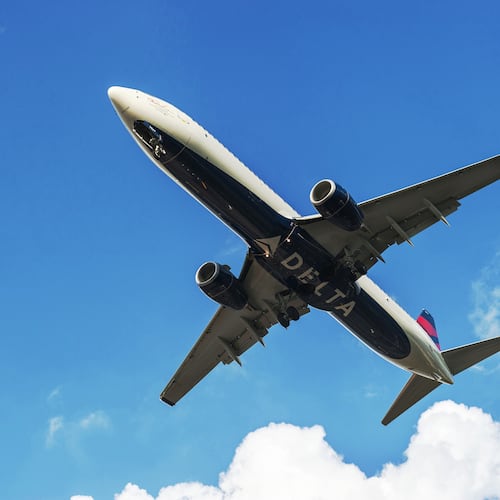MARTA bus driver Andrea Andrews had picked up a passenger in Grant Park last week and just turned east on Memorial Drive when the man protested the direction the bus was headed. He wanted to go downtown.
He slugged the 41-year-old driver in the face after Andrews said she couldn’t return his fare, a fight ensued and the assailant fled, according to a police report.
Andrews became the 15th driver physically attacked since July 1. Seven more have been robbed. At least 49 more have been cursed out, threatened or spat on. And at least 11 passengers have been assaulted or robbed. The combined nine robberies involving drivers and passengers since July are nearly half the number the transit agency recorded in the previous three years combined.
The drivers are fed up and clamoring for a safer workplace, said Rodney Blackmon, president of Local 732 of the Amalgamated Transit Union. The union represents 1,225 drivers, 36 percent of whom are women.
Safety measures are in the works. The MARTA executive board plans to install security cameras in buses and trains at a cost of $17 million next year. The board also is evaluating whether to spend another $1.3 million for shields to protect drivers in its 531 buses.
“We are not only concerned about the perception of crime, which, of course, is important,” said Jim Durrett, who chairs the MARTA board. “Our board is committed to ensuring our customers and our employees are as safe as possible whenever they ride MARTA.”
Blackmon said cameras will deter criminals from targeting buses, and shields will give drivers and passengers more peace of mind.
MARTA says there have been 64 verbal confrontations and physical assaults on buses this year, 25 percent above the quarterly average for 2009-2011.
“I would say from the spring there has been an increase in physical assaults on drivers,” Blackmon said. “We had one lady bus driver who got stabbed several times.”
That MARTA bus driver, Janet Royston, 52, survived the September attack in DeKalb County.
Attacks nationwide on transit drivers are on the rise, said Greg Hull, a security expert with the America Public Transportation Association.
In September, a Philadelphia bus driver was shot, which, according to local officials, was the 46th driver-related assault in that city this year, more than twice as many as last year. New York City transit has reported 69 assaults on drivers this year through September, a 20-percent increase from last year.
However, not everyone welcomes the proposed security measures. Terence Courtney, who heads the Atlanta Transit Riders Union, a grass-roots group composed of drivers and supporters, said cameras and shields send the wrong message to the public. The shields also create an additional barrier between the driver and the passengers, he said.
“That Plexiglas is a real divide and that is not literally or symbolically the kind of relationship we want to have,” Courtney said. “The statistics will show you that most routes happen day after day without violence.”
Isolating a driver behind a shield prevents drivers and riders from developing a mutually protective relationship that exists on some buses, Courtney said. He said passengers intervened on one bus when they feared another rider might attack the driver.
“The rest of the bus stood up to that passenger and shut that person down; that is because the driver had built up a relationship with those riders,” Courtney said.
Still, driver Rodney Poole said he would trade isolation for more security. “The shields are going to be designed so we can speak to the passengers,” he said. “You get verbally assaulted every day with people cursing you, but the concern is more heightened now because they are following through on their threats.”
Transit agencies are now trying to hire bus drivers who are good at dealing with a multitude of personalities that compose the passenger pool and train the drivers on techniques to defuse situations, Hull said.
“If you were to survey transit operators you would find that the majority would still want their same ability to interact with the public,” Hull said. “Before you enclose the driver, I think we have to look at overall security.”
Transit police have stepped up patrols — with plain-clothes and uniform officers — on the buses, and seven officers now ride at an annual cost of $500,000, MARTA spokesman Lyle Harris said.
Extra security has helped curb attacks and bad behavior, Poole said. Announcements also alert riders they will be prosecuted if they get into a confrontation with a driver, he said.
Courtney said riders, frustrated by a down economy, resent the recent 25-percent fare increase to $2.50 in October — the second hike in two years — and might be more prone to conflict. People also feel cheated because of the cuts in bus routes.
Moreover, he said, some drivers are rude to passengers.
“People are stressed out ... and some may have mental health issues,” Courtney said. “Couple those with lost routes and fare increases, [and] that can make people do crazy things.”
About the Author
The Latest
Featured

